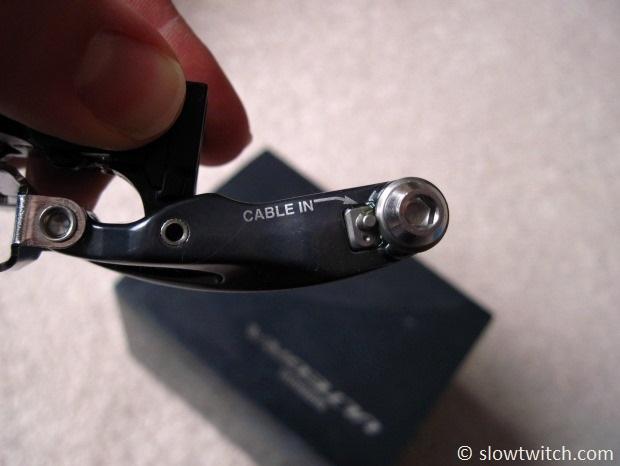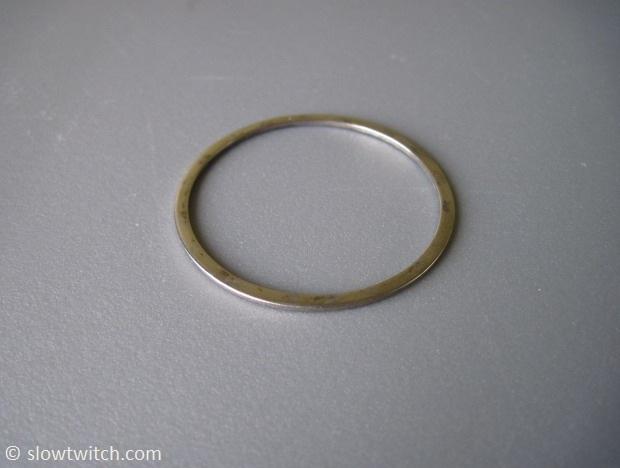Cassette Evolution
Now that the major manufacturers are all making 11-speed drivetrain components, it’s a good time to review cassette sizes, and see how they have evolved over the past ten or fifteen years. In some ways, cassette ranges have gotten wider. In others, they have gotten narrower. In some cases, we could argue that both have happened concurrently.
What caused all of these shenanigans, and what does it mean to you? Is there a ‘right’ cassette size that you want to buy for your bike? Color me curious… let’s find out.
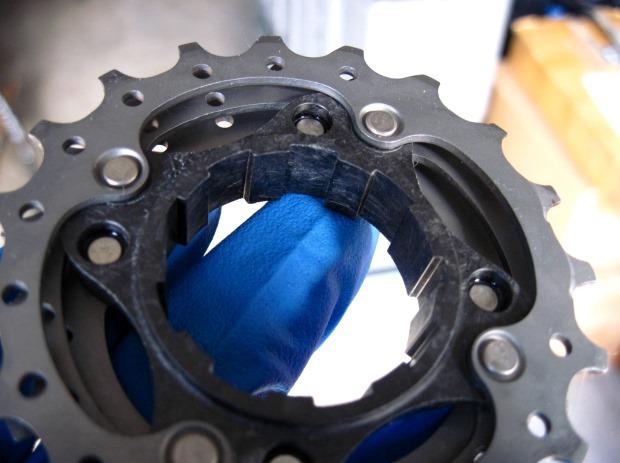
Terminology
Before we begin, let’s take a quick look at how we talk about gearing with a few examples.
11-25
This refers to a cassette. The smallest cog has 11 teeth, and the biggest cog has 25. The numbers are separated by a dash. This does not tell us anything about the number of cogs in the cassette (it could be a two speed cassette… or a twenty speed). It just tells us what the extreme ends are. To know how many cogs are in that cassette, we simply say, ‘9-speed’, ’10-speed’, and so on.
53/39
This refers to a pair of front chainrings. The big ring has 53 teeth, and the small ring has 39. The numbers are separated by a slash. This does tell us how many rings are on the crank. If it was a triple system, there would be a third number (for example, a 52/39/30 triple).
53×11
This is referring to a specific gear selection. In this case, the chain is wrapped around the big 53 up front, and the little 11 out back. The numbers are typically separated by an ‘x’.
2×10, 3×9
These are describing drivetrains. A ‘2×10’ system is pronounced ‘two by ten’. It has two front chainrings and ten cogs in the rear. A ‘3×9’ has three front chainrings and nine cogs in the rear.
Start with a niner…
Although bikes used to have all types of drivetrains with 5, 6, 7, or other numbers of rear cogs, we’re going to start our discussion with 9-speed systems. Why nine? For the most part, that’s the smallest number of rear cogs that you’ll find on the majority of modern road and triathlon bikes. I just don’t see that many 7 or 8-speed systems these days.
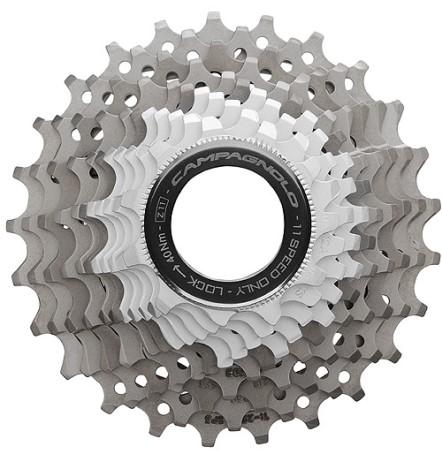
With nine speeds, your limiter tends to be how wide your cassette range can be. In other words, you don’t find many 9-speed cassettes that have a very small cog in the first position and a huge cog in the ninth position (barring, of course, mountain bike 9-speed systems). Back when Shimano was largely running the world of cassettes, your typical 9-speed road cassette ratios were: 12-23, 12-25, 12-27, 11-21, and 11-23. SRAM offered a 12-26. Campagnolo offered a 13-26. My list isn’t exhaustive; this just covers what most of us rode.
Chatter on internet forums revealed that many riders wanted wider-range options. Indeed, we saw spy photos of Pro Tour cyclists using custom 11-25 cassettes; sprinters needed the 11 for the finish, and the 25 just to get there in one piece. I was among the home mechanics who put together my own custom cassettes.
As 10-speed systems came out, we unfortunately saw many of the same cassette sizes. A 9-speed 11-23 and 10-speed 11-23 both have the same total range; the 10-speed cassette just has slightly smaller ‘jumps’ between gear sizes. If memory serves, I believe Shimano came out with an 11-25, but only in mid-level 105 components (at least for the first year or two).
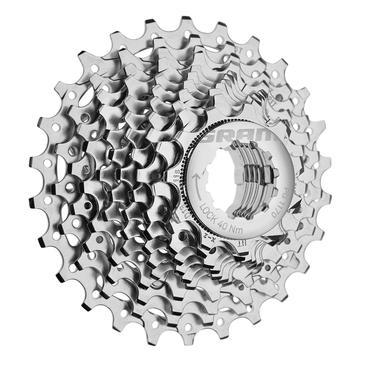
When SRAM hit the road scene with their Force and Rival groupsets in the mid 2000’s, they positively rocked the rest of the industry with innovative sizes like 10-speed 11-26 and 11-28. Riders finally had decently large climbing gears for going up the mountain, along with an 11-tooth cog for going back down the mountain. Along with FSA, they also pushed the boundaries in chainring sizes, popularizing the 50/34 compact, and 52/36 mid compact.
Shimano did what they always do, which is make slow but very calculated moves. They finally began offering 10-speed 11-25, 11-27, and 11-28 into their various systems. Ultegra always seemed to get the highest number of options. It is also worth noting that Shimano also retained great gear range by virtue of their triple chainring offerings, which didn’t ‘need’ the larger cassettes. Unfortunately for them, much of the industry had decided that triples weren’t fashionable any longer.
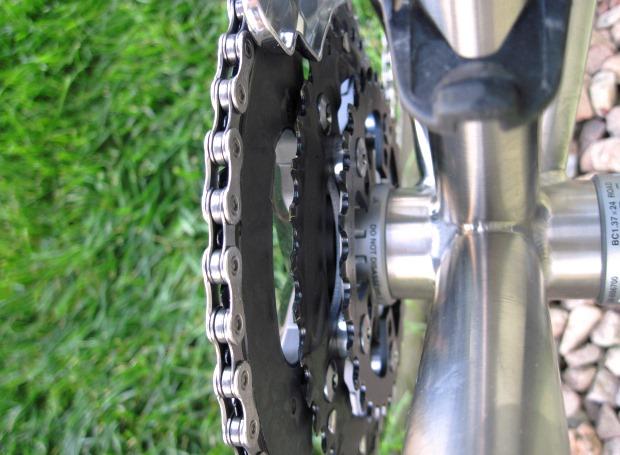
Just as Shimano was rounding out their offerings, SRAM pulled out the stops in cassette size by offering a special mid-cage Apex derailleur that could handle their new 10-speed 11-32 cassette. While these weren’t really new (mish-mash setups had been achieved in the past with things like IRD cassettes and mountain bike derailleurs), this was the first time we’d seen them marketed on a large scale.
Clearly, cassettes were getting wider ranges at a very rapid rate. The following shows a few different cassette options. We start with a very common 9-speed cassette – the 12-25. As you can see, 10-speed allowed us to conveniently add an 11 to that while retaining otherwise identical ratios. As we add wider range 11-28 and 11-32 options on top of that, it’s clear to see that our gear ‘jumps’ are getting larger and larger:

What do you really want? Wide range? Smaller jumps between gears? In a perfect world, we want both. Having closer spaced ratios allows you to more precisely select your cadence. Having a wide overall range allows you to ride more places – or shift your front derailleur less often. The way to get both is to add more cogs in the cassette. Campagnolo was the first to do so with 11-speed Record, but they chose not to get in to the wide cassette ranges.
Now that SRAM and Shimano are both making 11-speed, they’re finally offering some of the options that athletes can really benefit from. I’ll admit, I was initially very disappointed to see 11-speed come out. Do we really need this stuff? Is it worth forcing consumers to upgrade their wheels? In my opinion, the difference between 9 and 10-speed was nothing to write home about. Some of the wide range cassettes were nice, but they didn’t offer closer ratios than 9-speed.
Now that I have been on 11-speed Dura Ace 9000 for a year, I must sheepishly admit that… it is better than 10-speed. Adding that cog seems to make much more of a difference than the switch from 9 to 10 did. To illustrate why, I’m going to show you some more fancy graphs.

The chart above illustrates exactly why 11-speed does some pretty important magic. Looking at the 10-speed row, we can see that the 11-25 has the same exact spacing as a 9-speed 11-23 or 12-25. Looking at the 11-speed column, we see that it simply tacks on a 28-tooth cog. When riding this cassette, it is deceiving. On 10-speed, I always know when I’m out of gear… my bar-end is pointing at the sky, and I’m in trouble. With the 11-speed 11-28, there is a secret extra gear to save the day. You don’t think it’s there, but it is.
If we start from a 10-speed 11-28…

…we see that tacking on a 32-tooth cog makes perfect sense. Personally, I feel that the 10-speed 11-32 is too cumbersome for road riding. The large jumps get annoying, and it’s hard to find the right gear. With an 11-speed 11-32, you have much more reasonable gaps.
On the smaller end of things, let’s start with a narrow 9-speed 12-23. 10-speed gives us an 11-tooth cog, while 11-speed gives us a full 11-25 range.

What if I want even tighter gearing? Where can we take this? This is where things get interesting. While SRAM has historically pushed the rest of the industry in wide range cassettes, Shimano has quietly offered many more options in narrow ranges and special Junior gears. With 11-speed, the smallest cassette you can currently get from SRAM is 11-25. With Shimano, it’s 11-23.

Several years ago, I bought a 10-speed Ultegra 12-23 specifically for winter riding on the trainer. I still have it, and it does the job wonderfully. I can get the same thing with an 11-speed 11-23. While SRAM representatives were not able to comment on any definite plans for the future, they did mention that they have heard the request for an 11-23 more than once. Personally, I’d love to see them release it, even if only in mid-level Force.
What should you ride?
How do you know what to use? Unfortunately, it is impossible to make any sort of a blanket recommendation. Cassette size requirements vary hugely based on a rider’s fitness, local terrain, preferred cadence range, chainring sizes, and other factors. At some point, you just have to try for yourself. When in doubt, ask other local riders what they’re using before plunking down that cash.
Some people insist that, regardless of anything else, they MUST have a 16-tooth cog in their cassette. I thought the song said that three is a magic number, but some say it’s 16. The gear just ‘feels right’. It’s the Chosen Gear. Personally, I don’t get it. I’ve heard this request from people with 700c wheels, 650c wheels, and all different sizes of chainrings (and fitness levels). All of these things affect the gearing of your bike. A 16-tooth cog on two bikes can result in two completely different gear ratios if the wheel size or chainring sizes are different. Try it for yourself; you may love the 16, and you might not care.
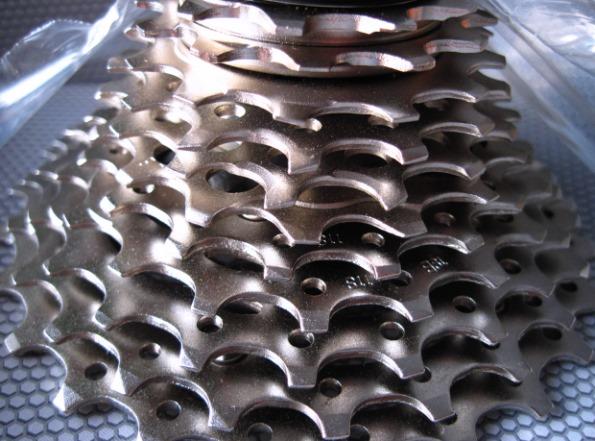
As a starting point, if you live in a flat area, an 11-23 or 11-25 may be sufficient. If you live in the Rocky Mountains, you’re likely going to need an 11-26 or larger. The more cogs you have in your cassette, the easier it will be to find the right cadence. With 11-speed systems, I personally think that 11-28 is the right choice for the middle 80% of the triathlon market. Some will need 11-32 and some will want tighter 11-23 and 11-25 ratios, but it is very hard to go wrong with the ’28. If you haven’t yet tried it, trust me – it’s that sweet.
Do we need both of those chainrings?
In my mind, this discussion brings up a big question: Do we need two chainrings up front? As we’ve seen in mountain biking, SRAM has been reducing the number of chainrings in their drivetrains at a very rapid rate. Triples died in favor of doubles, and doubles gave way to the single ring setup (called 1x, or ‘one-by’). With eleven gears in the back and a huge 10-42 mountain bike cassette, the rider can select an appropriate front ring to meet the needs of their local terrain. It is also worth noting that the small 10-tooth cassette cog required a new freehub design that is proprietary to this system (e.g. you need a special rear wheel).
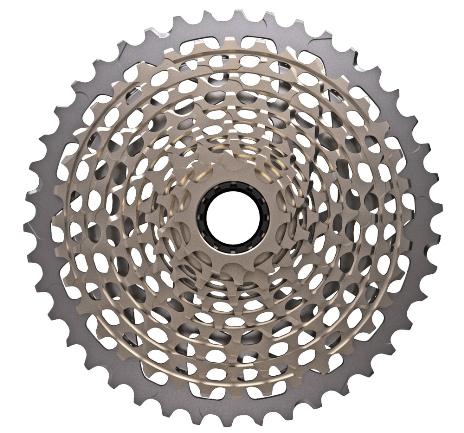
In the past couple months of cyclocross racing, we have seen prototype 1×11 systems on pro athletes’ bikes, too. Does that mean it will come over to road? This is entirely my opinion, but I wouldn’t be surprised in the least.
What might those cassette options look like? When going from an 11 to a 10-tooth small cog, you gain quite a bit of gear. For example, a high gear of 53×11 is almost exactly the same as a 48×10. That’s right – you could easily run a 48-tooth chainring up front and have plenty of high gear. The question, then, is what type of low gear would you use? Would a 48×28 be enough? If not, would a super-wide spread be acceptable for road riding? Looking at the chart below, even going as wide as 10-28 loses the beloved 16-tooth cog.

I think a setup like this could work for people that live in very flat areas, or those with only very gently rolling hills. Similar to the ‘evolution’ from triple to double systems on mountain bikes and touring bikes, you always lose overall gear range when you drop a chainring – even if you add a cog out back. It’s possible to minimize the loss with a wider range cassette, but then you’re stuck with same or worse gear jumps as you had before. Some suggest that we swap chainrings based on where we’re going to ride, but I think that’s a request that’s beyond the vast majority of the market and their busy lives. If nothing else, it will be interesting to see where it goes.
Summary
We hope this discussion has been ground breaking, fantastic, or at least a little educational. Does your bike have 9-speed, 10-speed, or the new 11-speed? Do manufacturers offer the cassette sizes that you want, or are there others that they’re missing? Do you hate numbers and just want to ride your bike? We’d love to hear your comments.
All charts © Greg Kopecky / slowtwitch.com



